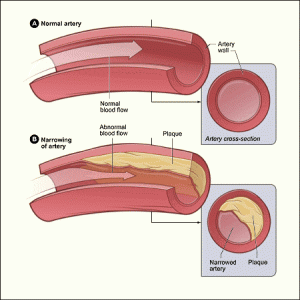 New research conducted at the University of Glasgow, Scotland, suggests that thrombolytic drugs—also called “clot-busting” drugs due to their use in dissolving blood clots—improve outcomes in patients who have suffered from strokes, even when they have a past history of stroke or diabetes. In fact, outcomes were similar to those demonstrated by patients who had experienced neither stroke nor diabetes.
New research conducted at the University of Glasgow, Scotland, suggests that thrombolytic drugs—also called “clot-busting” drugs due to their use in dissolving blood clots—improve outcomes in patients who have suffered from strokes, even when they have a past history of stroke or diabetes. In fact, outcomes were similar to those demonstrated by patients who had experienced neither stroke nor diabetes.
The study was conducted by Kennedy Lees, MD, and colleagues at the University of Glasgow. According to Lees, there is “no statistical justification” for denying such clot-busting medications to patients who have a history of stroke or concomitant diabetes. The research was reported in the November 22 issue of the journal “Neurology.”
The use of clot-busting drugs in patients with a history of stroke or diabetes has been controversial, mainly due to restrictions on the approval of intravenous alteplase (Activase) in Europe. Lees said in a statement that therapy with clot-busting drugs “can limit damage and disability due to blood clots” but that “current guidelines can keep people from receiving the therapy if they have a history of stroke and diabetes.” However, physicians often ignore the restrictions when prescribing thrombolytic drugs to these patients.
Lees and his colleagues analyzed data from two registries of stroke victims. One group (the “T” group) consisted of 23,334 patients from the Safe Implementation of Thrombolysis in Stroke-International Stroke Thrombolysis Register. The other group (the “C” group) consisted of 6,166 patients who had not received treatment with thrombolytic drugs. That data was pulled from the Virtual International Stroke Trials Archive.
The researchers measured outcomes using the 90-day modified Rankin Score, which measures stroke-related death and disability.
In total, the researchers used data from 29,500 patients: 5,411 (18.5 percent) had diabetes; 5,019 (17.1 percent) had a previous stroke; and 1,141 (5.5 percent) had a history of both diabetes and stroke.
Upon analyzing the data, the researchers found that 43.2 percent of the diabetes who received thrombolytic drugs demonstrated a modified Rankin score of 2 or less, which is considered, at worst, a slight disability. Meanwhile, 34.8 percent of patients with diabetes who had not received thrombolytic treatment had a score of two or lower.
Among patients who had a history of stroke and received clot-busting drugs, 48.4 percent showed a modified Rankin score of two or less, compared to 34.5 percent who did not receive the drugs.
Among patients who had a history of both stroke and diabetes, 37.7 percent who received thrombolytic drugs showed a score of two or lower compared to 34.5 percent who did not receive the drugs.
The findings demonstrated that, on average, patients showed improved modified Rankin Scores when they received treatment with clot-busting drugs.
“Better outcomes with therapy show that people with prior stroke or diabetes should not be excluded from receiving thrombolytic therapy,” said Lees. The researchers noted that the study was not randomized; however, they believed that they “attained a reliable statistical result” after adjusting for confounding factors.
According to Bart Demaerschalk, MD, of the Mayo Clinic Hospital in Phoenix, Arizona, noted in an editorial accompanying the study that up to 15 percent of people who arrive at the emergency room with a stroke have a history of previous stroke or concomitant diabetes. Issues surrounding the treatment of these patients with thrombolytic drugs include whether physicians should consider transient ischemic attacks or glucose tolerance in prescribing the drugs. Still, Demaerschalk concluded that “there appears to be no justification for the continued restriction of these patients from receiving thrombolytic therapy.”